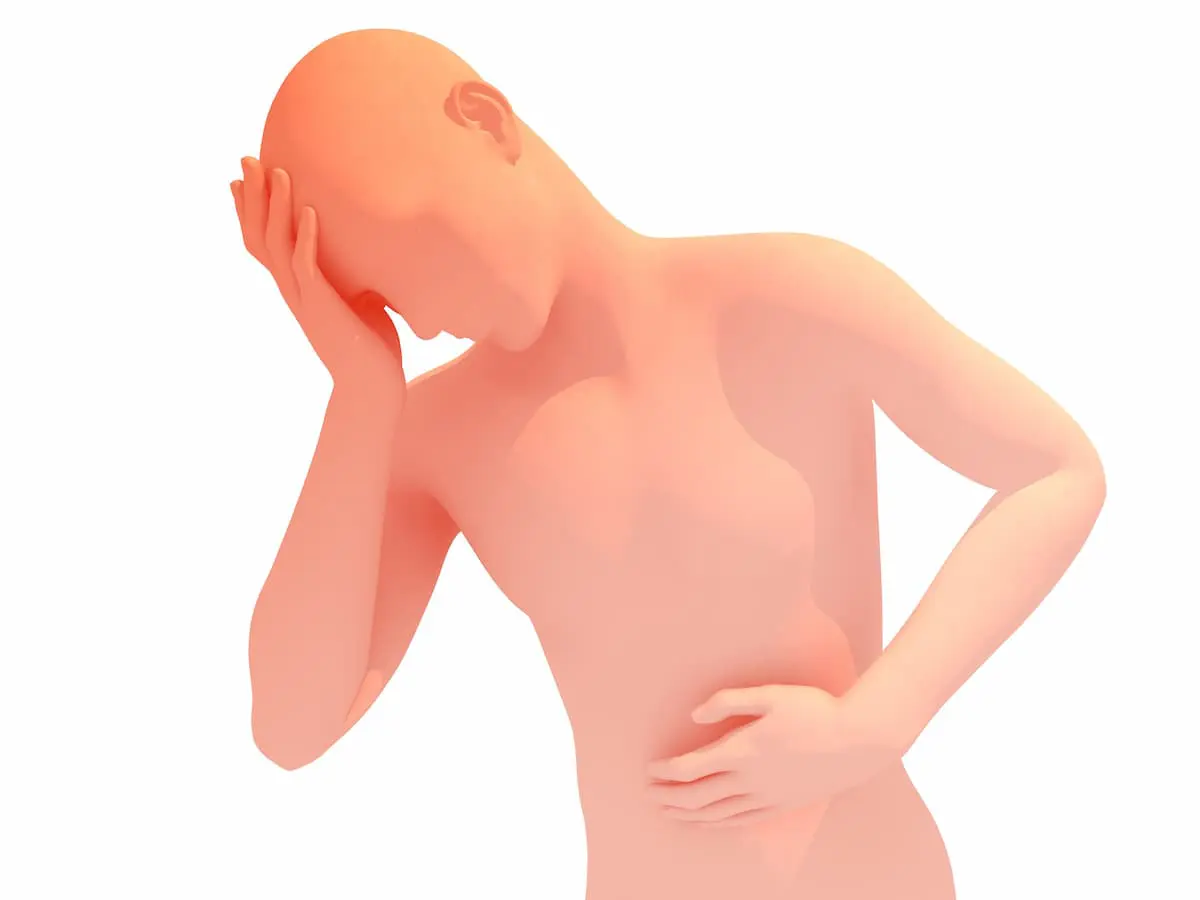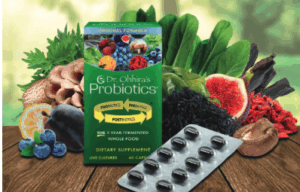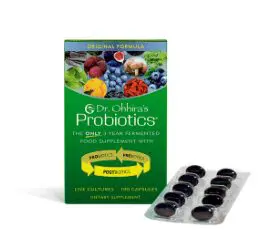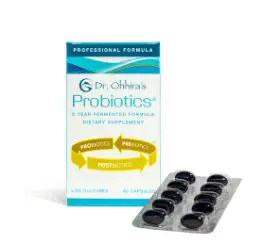Original Post Date: August 2, 2018
As a pharmacist, I’m often asked, “Should I take a probiotic while still on the antibiotics or wait until I have completed the course of antibiotics? The short answer is “Yes.” Due to major advances in microbiome science, my answers to these questions have changed dramatically over the past several years.
Probiotic bacteria and the gut microbiome play critical roles in regulating our health. However, antibiotics indiscriminately kill a significant percentage of your beneficial probiotic bacteria along with the pathogens they are designed to eliminate. It has been well documented that antibiotics severely disrupt the gut microbiome, which results in dysbiosis. Bacterial imbalance in the gut(dysbiosis),¹ is associated with intestinal disorders such as inflammatory bowel disease, irritable bowel syndrome (IBS), and celiac disease. Furthermore, dysbiosis is also associated with extra-intestinal health problems such as allergies, asthma, metabolic syndrome, cardiovascular disease, obesity, and cancer.² ³
Optimizing Probiotic Intake During Antibiotic Therapy
The contrasting names “pro-biotic” (promoting life) and “anti-biotic” (against life) hint at their fundamental interaction. While antibiotics are indispensable for targeting pathogenic bacteria, their action is not selective and they will also impact the beneficial bacteria you might be supplementing. Consequently, if you are incorporating probiotics—whether initiating them specifically for the antibiotic course or maintaining an existing routine—careful timing is crucial. It is imperative to schedule your probiotic intake several hours apart from your antibiotic dose (for example, at least 2-3 hours before or after). This spacing allows the probiotic bacteria a window to potentially exert some benefit before encountering the antibiotic, which would otherwise neutralize them, thereby diminishing their immediate supportive effect on your gut during the treatment period.
What To Do Following Antibiotics
Following a course of antibiotics, it is critically important for people to take proactive steps to quickly rebuild a healthy gut microbiome. However, many people mistakenly believe taking high-dose probiotics orally will repopulate the gut microbiome (the colon) with probiotic bacteria. This is an unfortunate misunderstanding of how probiotic bacteria and the gut microbiome function.
Studies have shown that when various strains of probiotic bacteria are exposed to strong acid (the equivalent of stomach acid), the probiotics DO NOT survive⁴. I provided the scientific explanation for why orally ingested probiotics generally don’t work in a short article titled The Oral Probiotic Dilemma, which is available at www.naturalphatmacist.net/dilemma
The Gut Microbiome Ecosystem
In a healthy gut microbiome ecosystem, probiotic bacteria that reside in the colon convert components in food into a wide range of compounds that are collectively referred to as postbiotic metabolites. Probiotic bacteria produce postbiotic metabolites when they ferment/digest plant-based foods that contain dietary fibers and polyphenols. We are learning that postbiotic metabolites regulate many aspects of human health.
Thus, probiotic bacteria don’t directly regulate your health. Instead, it is the postbiotic metabolites that probiotic bacteria create that control and regulate a vast amount of human biology and health. Probiotic bacteria are chemical manufacturing “factories” that produce the health-regulating postbiotic metabolites.
Temperature vs Acidity
Temperature is a critical regulator of the environment on Earth for the health of plants, animals and humans. In the gut microbiome, the level of acidity is the key regulator of the ecosystem. The optimal level of acidity for a healthy gut microbiome is from pH 6.2 to 6.8, which is weakly acidic. This is the level of acidity that is optimal for the growth and proliferation of your probiotic bacteria and this weak level of acidity inhibits the growth of pathogens. After 3 years of fermentation, Dr. Ohhira’s Probiotics contains over 500 postbiotic metabolites, and over 100 of these compounds are weakly acidic postbiotic metabolites. One of the reasons Dr. Ohhira’s Probiotics works so well is that the acidic postbiotic metabolites help maintain an optimal microbiome ecosystem that enables your probiotic bacteria to thrive, proliferate and continue producing more postbiotic metabolites.
Benefits of Postbiotic Metabolites
Short-chain fatty acids/SCFAs (acetic acid, propionic acid, and butyric acid), are the most well-known and most studied class of postbiotic metabolites. SCFAs have anti-inflammatory activity which helps convert inflamed cells in the lining of the intestinal tract back to a healthy state. This is important because after taking an antibiotic, dysbiosis and gut inflammation are likely to occur. The cells that line the GI tract have the fastest rate of turnover of all cells within the body. The average rate of renewal of cells in the lining of the human intestinal tract is about 4 to 5 days⁵. This means that humans create a new lining of their gastrointestinal tract every 4-5 days. However, studies have shown that antibiotics interfere with this critical process of cellular renewal, which weakens the microbiome and an individual’s immune system⁶.
Other classes of postbiotic metabolites include antioxidants, vitamins, amino acids, enzymes, antimicrobial peptides, and neurotransmitters. One of the most important benefits of postbiotic metabolites is that they function in a variety of ways to regulate the human immune system.
Take Dr. Ohhira’s Probiotics Following Antibiotics
The manufacturing process for Dr. Ohhira’s probiotics makes it the BEST probiotic to use following antibiotic therapy. Let me explain why. For centuries, people have consumed fermented foods and many scientific studies report that fermented foods provide a range of health benefits⁷. Dr. Ohhira’s Probiotics is a fermented food probiotic, which is produced in a multi-year fermentation process. 13 strains of probiotic bacteria are added to 80-gallon fermentation vats along with a wide range of healthfully grown Japanese fruits, vegetables, mushrooms and seaweeds. During this lengthy fermentation process, the bacteria convert components in the food they are provided into a wide range of postbiotic metabolites.
Dr. Ohhira’s Probiotics: A Growth Stimulant for Your Gut Microbiome
Farmers and gardeners add natural fertilizer to the soil, which improve the quality of the soil and enhance the health and growth of plants. In a similar fashion, Dr. Ohhira’s Probiotics, which contains over 500 postbiotic metabolites, function as a growth stimulant for your gut microbiome. The postbiotic metabolites help create and maintain healthy microbiome ecosystem that is optimal for the growth and proliferation of your probiotic bacteria. And, a healthy microbiome with a slightly acidic pH inhibits the growth of pathogens.
After a course of antibiotics, directly ingesting over 500 postbiotic metabolites in Dr. Ohhira’s Probiotics is the fastest and most efficient way to reestablish a healthy balance in the microbiome ecosystem, which allows your own probiotic bacteria to proliferate and reestablish a healthy gastrointestinal environment and a healthy immune system after taking a course of antibiotics. That’s the Dr. Ohhira’s Advantage…!!
Shop Dr. Ohhira’s Probiotic Supplements
-
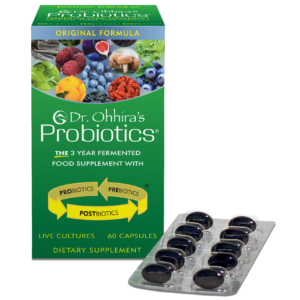 Dr. Ohhira’s® Probiotic Supplements with Original Formula$13.95 – $89.95
Dr. Ohhira’s® Probiotic Supplements with Original Formula$13.95 – $89.95 -
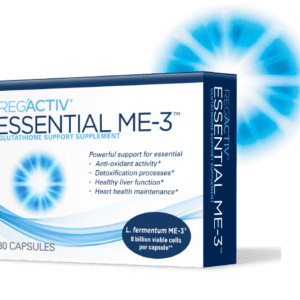 Reg´Activ® Essential ME-3$39.95
Reg´Activ® Essential ME-3$39.95 -
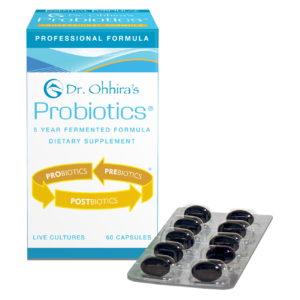 Dr. Ohhira’s® Probiotics Professional Formula$39.95 – $129.65
Dr. Ohhira’s® Probiotics Professional Formula$39.95 – $129.65
References:
1 Lange K, et al. Effects of Antibiotics on Gut Microbiota. Digestive Diseases. 2016;34:260-268.
2 Carding S, et al. Dysbiosis of the gut microbiota in disease. Microbial Ecology in Health and Disease. 2015;26(1).
3 Sheflin AM, et al. Cancer-Promoting Effects of Microbial Dysbiosis. Current Oncology Reports. 2014 Aug 16;16(406).
4 Caillard R and Lapointe N. In vitro gastric survival of commercially available probiotic strains and oral dosage forms. Int J Pharmaceutics. Mar 15, 2017. 519;1-2:125-127.
5 Gunther C, et al. Regulation and pathophysiological role of epithelial turnover in the gut. Seminars in Cell & Developmental Biology. Nov. 2014l35:40-50.
6 Stolfi C, et al. Implication of Intestinal Barrier Dysfunction in Gut Dysbiosis and Diseases. Biomedicines. 2022;10(2):289.
7 Diez-Ozaeta I and Astiazaran OJ. Fermented foods: An update on evidence-based health benefits and future perspectives. Food Research International. June 2022;116:111133.


